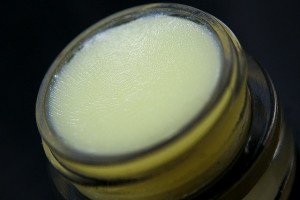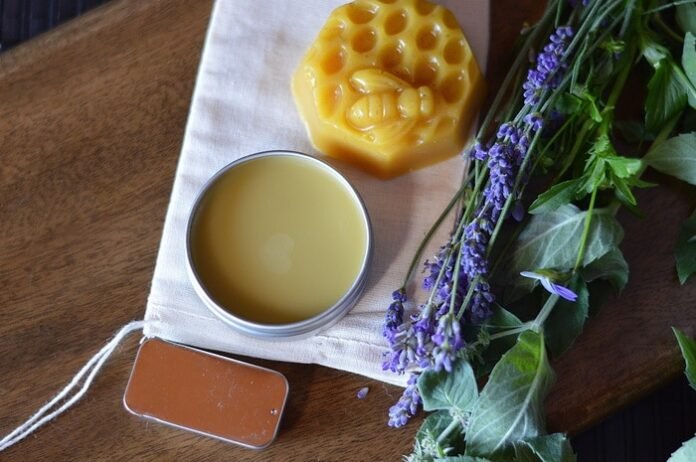Herbal salves are extremely effective and useful medicine. Their preparation is easy and simple, and we want to encourage you to create your own natural remedies. You can start making herbal salves that are very effective for the alleviation of arthritis, bruises, rashes, cuts, swelling, infection, inflammation, insect bites. They can also be used for dry skin, wounds, psoriasis, and all other forms of skin diseases. In this article I will describe the methods and procedures for making herbal salve, and point out their healing properties.
Salves are usually in a semi solid state, and faster absorbed than oils.

Most often they are made with beeswax, which further protects, softens, nourishes and heals the skin.
Creating macerate
To make a herbal salve, it is first necessary to make a herbal infusion in oil or macerate. It will take a few weeks, but once done, the rest of the process will take a minute! Also, if you don’t have time, you can buy herbal infusion in oil or macerate. You can choose herbs you want to use according to their healing properties that are listed on the bottom of the article.
Sun method:
Fill 3/4 of the jar with dried herbs, pour cold pressed sunflower, olive, or another base oil. The plants should be completely covered with oil. The plant, which will probably swell a little, should not protrude from the oil because it favors the development of bacteria. Usually, 100 g of the plant goes to 1-2 cups of oil, but it all depends on the plant. The solid parts of plants, such as roots and bark will absorb less oils from flowers and leaves.
Place the jar in the sun and shake it 1-2 times a day. Do so for 4-6 weeks. That is, until the oil takes the color and smell of the plant. When the process is finished, strain the oil through cheesecloth and store it in a dark brown glass vial. Prepared oil can last a year, if you keep it in a dark and cool place and if you also add a small amount of vitamin E, you extend its life in a natural way.
Turn macerate in a herbal salve
You will need:
- 250 dl macerate
- 30g beeswax
- 10 drops of Vitamin E oil (optional)
- 10-20 drops of essential oil of your choice (lavender, chamomile, tea tree …)
- jar
Place macerate and beeswax in a bowl with double bottom and gently heat until the wax melts. Remove from heat and add the essential oils and Vitamin E (optional). Pour in small boxes for salve and let it cool completely. If you store it properly, salve can last 1-3 years.
Note: you can change the structure of salve in its sole discretion. If you want stiffer, put more beeswax, if you want more liquid, put less. The structure can be tested if you put a spoonful of balm in the refrigerator.
Plants for making herbal salve
Herbal salve can work with one or more plants, depending on your preference and needs.
- Arnica Flower: Helps in the treatment of trauma, bruises, sprains, arthritis and muscle pain. Use immediately after exertion or injury to prevent, mitigate and reduce swelling, bruising and pain.
- The root of Bur: For the treatment of psoriasis, edema and skin infections.
- Marigold: Excellent for many skin diseases, skin irritations, wounds, insect bites, rashes, scars, cuts, inflammation, and much, much more.
- Cayenne Pepper: Warming, good for arthritis and muscle pain, reduces pain and itching.
- Chamomile Flowers: Hemorrhoids, cuts, scars, wounds.
- Chickweed: Calms, soothes and heals psoriasis, edema, burns, rashes and other skin irritations.
- Comfrey (leaf and root): Relieves pain, swelling, strengthen muscles, pelvis and bones. Soothes and heals edema, dermatitis, viral skin infections, bone fractures, arthritis, wounds and bruises.
- Echinacea: Antibacterial, helps heal wounds, insect bites.
- Ginger: The warming effect benefits in the treatment of arthritis and aching muscles.
- Lavender Flowers: Soothes, relieves hemorrhoids, pain, excellent for treating skin diseases.
- Nettle leaf: Anti-inflammatory, excellent in treating many skin diseases.
- St. John’s wort: Anti-inflammatory, is favored in the treatment of wounds, cuts, bruises, swelling, varicose veins, insect bites, scars, rashes, burns, pain.
- Thyme: Strong antiseptic use in cuts, bruises and sore muscles.
- Yarrow Flowers: Heals bruises, wounds, cuts, rashes, edema, scarring, swelling and bleeding.
So, this is how to make herbal salve with healing properties. Choose the herb you think would suit you the most and make herbal salve at home. There is nothing better for your skin than natural herbal salve.
Making your own homemade cosmetics requires a little knowledge of essential oil and aromatherapy. If you are interested in learning more about it and learning more useful recipes for making cosmetics, take a look at this electronic book that has all the information you need: Essential oil recipes
Tell us your experience with making herbal salve in a comment section bellow, looking forward to hearing how making homemade salve turn out to you!
















